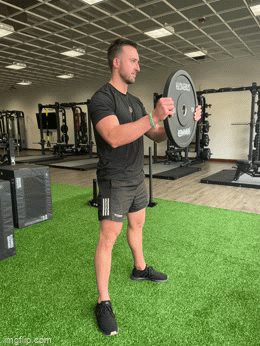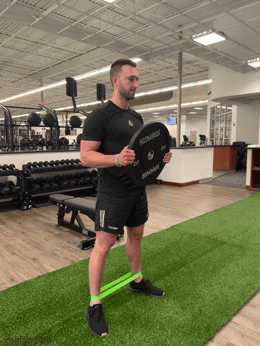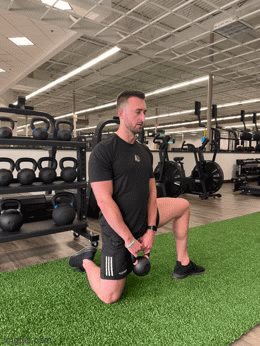When it comes to optimizing your fitness journey, it's easy to overlook the importance of lower body mobility. However, neglecting this crucial aspect can significantly hinder your progress in terms of muscle gain, activation, recovery, and overall range of motion during workouts. In this blog post, we will delve into the significance of lower body mobility and explore how it can unlock your true potential in the gym.
1. Enhanced Muscle Gain and Activation:
Lower body mobility plays a vital role in muscle development. Engaging in regular mobility exercises can prime your muscles for more effective strength training sessions. Improved mobility in the lower body means that you can achieve better form and technique, enabling you to target specific muscle groups more effectively. Proper muscle activation stimulates muscle growth, enhances muscular endurance, and even prevents imbalances or injuries caused by compensatory movements.
2. Accelerated Recovery:
Effective recovery is a key component of any fitness regimen. Neglecting lower body mobility can result in muscle imbalances, tightness, and restricted blood flow. This can hinder your body's ability to recover efficiently between workouts, leading to prolonged soreness and an increased risk of injury.
Incorporating mobility exercises into your post-workout routine can aid in promoting faster recovery. By increasing blood flow, reducing muscle tension, and releasing fascial restrictions, you can alleviate muscle soreness, improve nutrient delivery to muscles, and eliminate waste products, thus accelerating the recovery process and preparing your body for the next training session.
3. Expanded Range of Motion:
One of the most apparent benefits of lower body mobility is an increased range of motion (ROM). Optimal ROM allows you to perform exercises with full joint articulation, maximizing muscle recruitment and stimulating further muscle growth. When your lower body is mobile, you can squat deeper, lunge with stability, and easily perform explosive movements.
Greater ROM also translates into functional benefits beyond the gym. Improved mobility in daily activities such as walking, climbing stairs, or bending over will enhance your overall quality of life, reducing the risk of falls and maintaining independence as you age.
4. Injury Prevention:
Injuries can be detrimental to your progress and motivation. Poor lower body mobility is often a contributing factor to many workout-related injuries. Limited mobility can lead to compensatory movements, placing excessive stress on muscles and joints, resulting in strains, sprains, or overuse injuries.
By focusing on lower body mobility, you can address any existing imbalances, correct movement dysfunctions, and minimize the risk of injury. Increased mobility allows your body to move in its natural anatomical range, reducing unnecessary strain and promoting proper biomechanics during exercise.
Lower body mobility is a fundamental aspect of any well-rounded fitness routine. It impacts muscle gain, activation, recovery, and overall range of motion. By incorporating regular mobility exercises into your training program, you can unlock your true potential, optimize your workouts, and reduce the risk of injury. Remember, a mobile lower body is a strong lower body that can take your fitness journey to new heights. So, invest in mobility and reap the rewards of a healthier, more functional body.
WANT TO UNLOCK EVEN MORE MOBILITY? You can meet with any of our personal trainers, including our Physical Therapist Dr. Dan, to learn more and start unlocking your total potential! Give us a call to schedule a 1:1 or stop by anytime and ask to speak with a trainer!
TRY OUT THIS LOWER BODY WARM-UP BEFORE YOUR NEXT LEG DAY:
1. Deep Squat w/ Weight Shift
Use a 10-15 pound weight to offset your body weight
Keep weight distributed between your big toe, little toe, and heel (tripod foot), point your toes slightly out
Drive your knees out and sink down into your squat
In the bottom position, alternate driving your knee over your toes while remaining all contact points with your feet, hold the calf stretch for 5 seconds, and then switch
Keep your glutes engaged and don’t rest on your knee joint in the bottom position
Do 8 reps on each side
2. Banded Squat w/ Hold
Use a 10-15 pound weight to offset your body weight
Keep weight distributed between your big toe, little toe, and heel (tripod foot), and point your toes slightly out
Drive your knees out and sink down into your squat
At the bottom of your squat, keep your knees driven out and hold the position for 5 seconds, you will get a burn in the glutes and quads
Do 8 reps
3. Kettlebell Weight Shift
Use the kettlebell for balance and to enhance the stretch
The hip being opened is the up-knee side, start with the knee and ankle stacked, toes going straight out to the side, shoulders and hips square with the wall in front of you
Squeeze through the up leg glute the entire time, and shift your weight to that side while staying square
Hold the bottom position for 5 seconds
Do 8 reps on each side


















